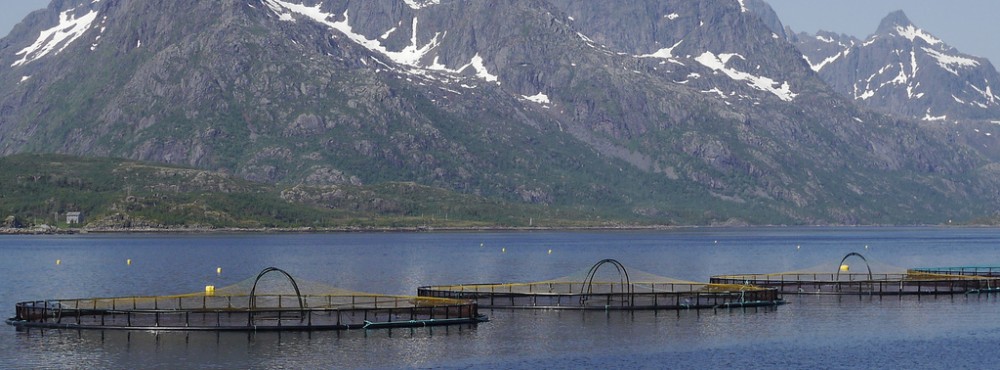BEHAVIOUR
Changes in salmon behaviour are concurrent with the stress response. Certain types of salmon behaviour are a response to the stress experienced in order to counter, cope with, or avoid the stressor and re-establish homeostasis. Common behaviours measured include foraging behaviour, ventilation rate, aggression, and stereotypies and abnormal behaviour.
Foraging Behaviour
- Foraging behaviour includes feeding rate, daily feed intake, time taken to start feeding after feed administration, and feed anticipatory activity
- Foraging behaviour is a good indicator of welfare when management practices, physical features of the environment (O2 and CO2 levels, water quality, temperature, pH, etc.), and stocking density have changed (Jobling et al, 2001).
- Foraging behaviour is a subjective measurement of welfare since changes in foraging behaviour have to be analyzed with other factors of the environment and requires producer intuition
- Foraging behaviour is difficult to measure and requires costly technology and equipment (see technology on last page)
Ventilation Rate
- Salmon ventilation rate in a good environment is relatively constant (Martins et al, 2007)
- Deviation in ventilation rate may indicate poor welfare
- Ventilation rate changes in hypercapnia, hypoxia, extreme pH, parasite infection, disease, anemia, stress response, and when salmon are in fear or pain (Ashley, 2007; Sneddon, 2003)
- All of the previous conditions are examples of poor welfare state of the system
- However, solely observing ventilation rate is not as insightful in understanding the salmon welfare since positive emotional states (like sexual contact) and feeding change ventilation rate as well (Ashley, 2007)
- Measuring the levels of stressors in the environment that stimulates changes in ventilation rate (i.e. dissolved O2 and CO2 levels) in conjunction with measures of ventilation rate will allow us to build correlational data that depicts how physical factors of the farming system alter behaviour/performance
- Subjective intuition by farmer is necessary
Aggression
- Salmon live in groups when resources are high however, when resources are limited individual living is preferred and in closer proximity to conspecifics, salmon exhibit aggressive behaviour (Martins et al, 2011)
- Applying this adaptation of salmon in natural living to a confined system, it is possible that salmon exhibit aggression when faced with limited resources in close proximity to one another
- Thus when aggressive behaviour is observed in a system it may be indicative a deficiency in some resource
- Exactly what resource is deficient depends on measuring physical factors of the system and keeping a record of management quality

Salmon exhibiting aggressive behaviour as seen by an underwater camera. Underwater cameras facilitate recording of behavioural observations (see page 4 “Technology” for more information on underwater cameras)
Stereotypies & Abnormal Behaviour
- Stereotypic and abnormal behaviour in salmon farms has been correlated with the presence of a stressor or deficiency in some component of the environment (Martins et al, 2011)
An example: Repeated circular shoaling observed in sea-caged Atlantic salmon may be an indicator of compromised welfare but there is no clear reason behind this stereotypie (Kristiansen et al. 2004). Welfare may be compromised in this example because salmon in these sea cages are confined in relatively bright shallow depths making them “feel” more exposed to predators (Ashley, 2007). Circular shoaling may be a mechanism by which Atlantic salmon can cope with this environmental limitation
- Thus stereotypies and abnormal behaviour may not always be a negative experience for the salmon since some stereotypes (like shoaling) may be a coping strategy, allowing the salmon to live in a deficient environment
- The behaviour itself may not be bad, but it may be indicative of some deficiency in salmon welfare.
